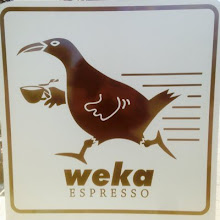They say that you board a cruise as a passenger and leave as cargo. It's entirely probable as the food is plentiful and you’ll never be hungry. This is both a good and bad thing. An almost continuous buffet with meals and snacks and an a la carte restaurant is included in the cruise fare. The menu changes daily and there are also themed menus each day such as Swedish, Italian, Greek and so on. You can order extra vegetables, something we started to miss, or extra fries or fruit on the side for most meals if you feel like something else. I got into the habit of ordering a plate of watermelon (five small pieces) to gorge on with breakfast and lunch.
It's worth checking out some of the specialty restaurants on board (these come with a surcharge) and the treats you can purchase from the cafes are worth trying at least once. While it's tempting to start each three course meal with the bread brought to your table (or pastries and toast for breakfast), I decided to pace myself and was even crazy enough to only have one course for lunch. Sometimes.
 |
| Fruit and marscapone tart |
So what does it take to feed a cruise ship? Here are some shopping list stats for average food consumption during a 10 day cruise:
- 2900 kg flour
- 2200 kg watermelon (I probably ate 200 kg of this alone)
- 9800 l milk
- 110 kg espresso beans (I also helped out here)
- 1500 kg tomatoes
- 1250 kg French fries
- 2800 dozen eggs
- 700 kg oranges
- 850 kg apples
- 3200 kg chicken
- 2200 kg rice
 |
| Kitchen assembly line, where meals are plated for serving |
 |
| A row of gigantic refrigerators |
 |
| Look at that mixer! |
According to my calculations, we probably got our money's worth from the food alone, let alone travel, accommodation and entertainment - and that's with pacing ourselves and not getting carried away at each meal or in between. And my net damage? 1 kg down. Woo hoo!

No comments:
Post a Comment